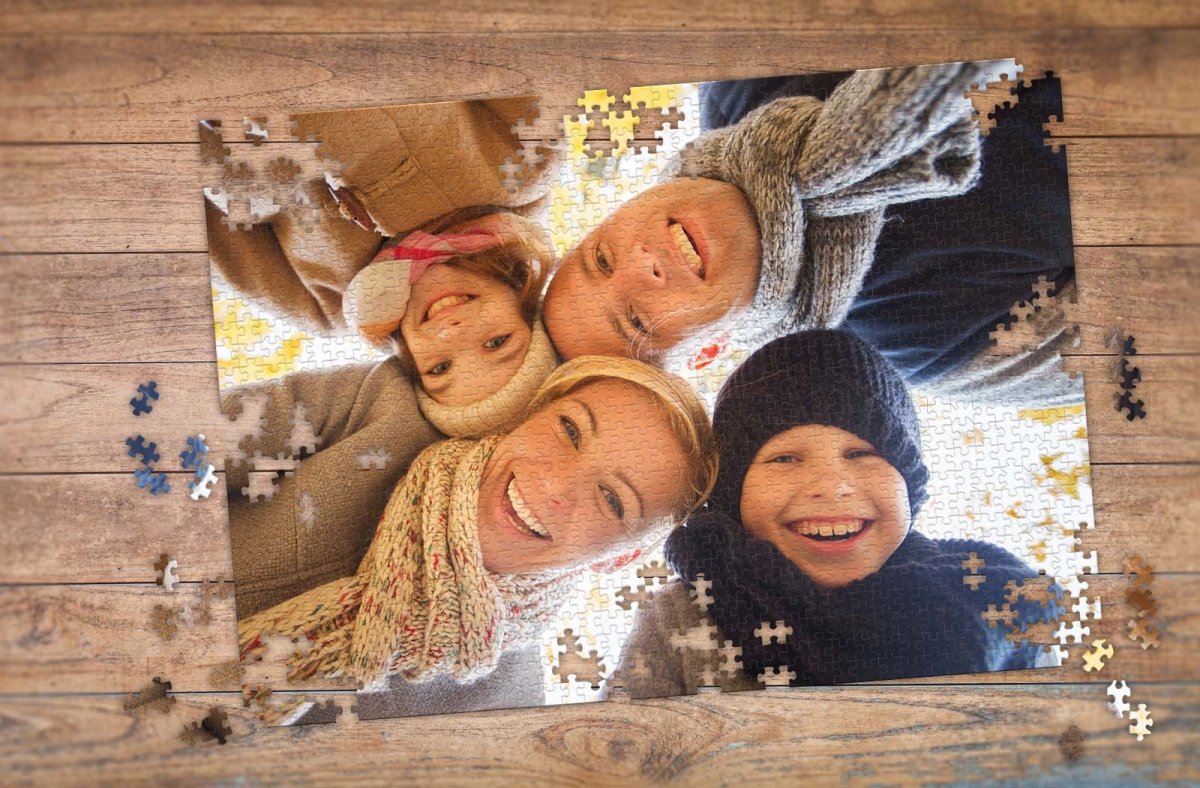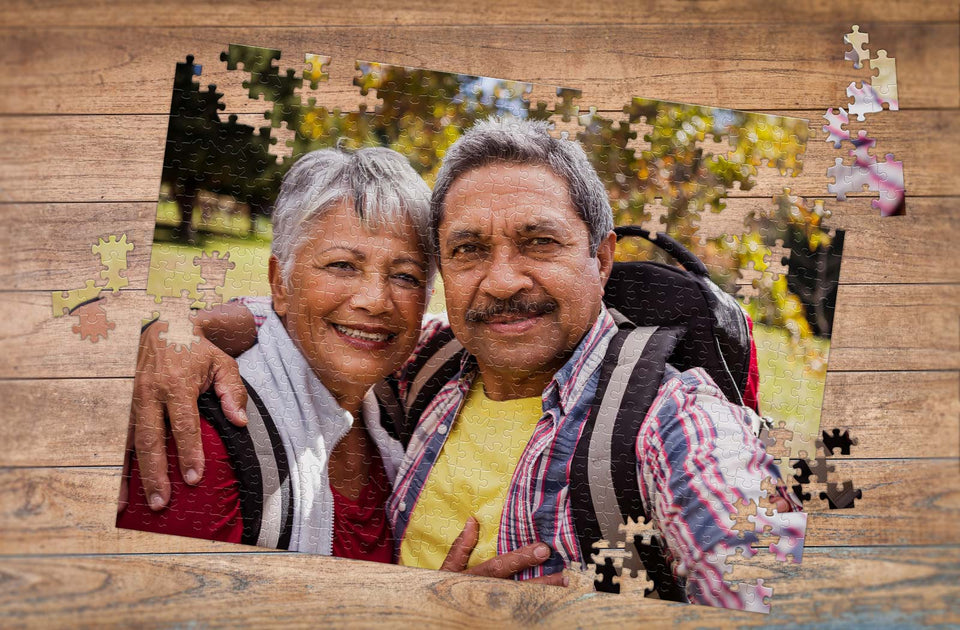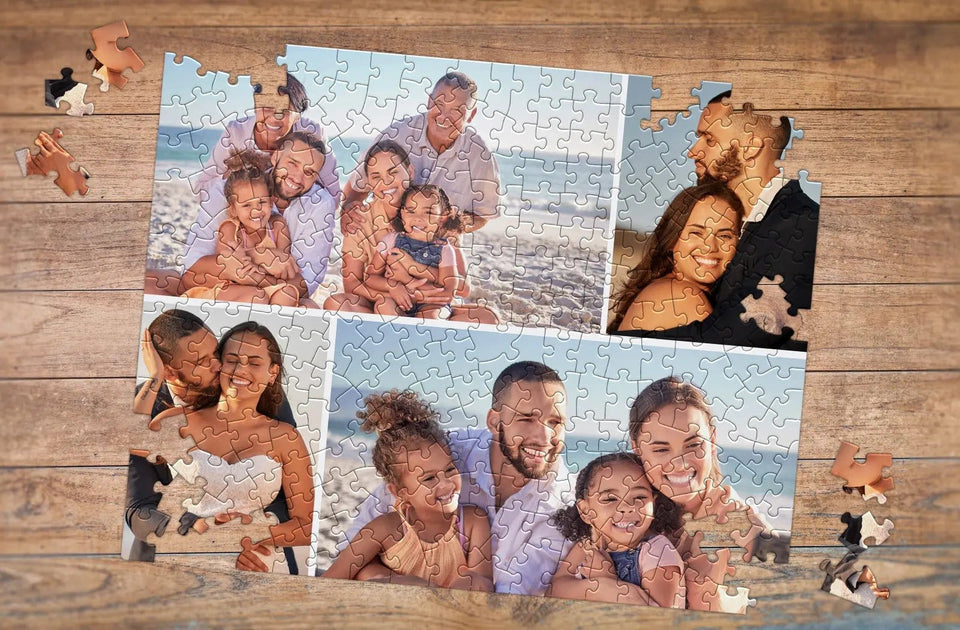Are you looking to introduce your child to puzzles? Maybe you’ve seen a lot of 100-piece puzzles out there and found yourself wondering, “What age is best for a 100-piece puzzle?”
Let’s answer that question, as well as explore some of the best ways to get kids excited about puzzles, including helping them to design their own puzzle and joining them in the fun.
What Age Is Best for a 100-Piece Puzzle?
A 100-piece puzzle is typically recommended for children between the ages of 5 and 8, offering just the right amount of challenge for their developing motor and cognitive skills. However, this puzzle count isn’t limited to this age group! Older children, adults, and even seniors can enjoy these puzzles too. In fact, a 100-piece puzzle can be a great way to introduce someone to puzzling without overwhelming them, or it can be a way to relax when you’re looking for a low-pressure activity that takes just a few hours to complete.
Puzzle Sizes for Different Age Groups
Puzzles are a fantastic way to engage children of all ages, but choosing the right piece count is critical to ensure they find it fun and not too overwhelming. Below is a guide to the most suitable puzzle sizes for different age groups:
|
Age Group |
Puzzle Size (Pieces) |
Description |
|
Ages 2-3 (Toddlers) |
2 to 20 |
Large, wooden puzzles are best. These help develop fine motor skills and coordination. |
|
Ages 3-5 (Preschoolers) |
24 to 48 |
Look for puzzles with larger pieces, featuring colorful and familiar images. |
|
Ages 5-8 (Early School) |
50 to 100 |
100-piece puzzles are ideal, providing just the right level of challenge while boosting problem-solving skills. |
|
Ages 8-12 (Middle School) |
200 to 500 |
Look for more advanced puzzles that help improve critical thinking and spatial awareness. |
|
Teens and Adults |
1000+ |
Designed for advanced puzzlers, these offer detailed images and small pieces that demand patience. |
Factors to Consider in Choosing the Right 100-Piece Puzzle
Puzzle Piece Size
The size of the puzzle pieces is a critical factor when selecting a 100-piece puzzle. For younger children, larger pieces are easier to grasp and reduce the risk of choking hazards. However, by the time they are 5 to 8 years old, children are typically ready to handle the smaller pieces that come with a 100-piece puzzle, as they’ve developed better fine motor skills.
Puzzle Shape
Puzzles come in various shapes, such as square, rectangular, and more unique options like animals or maps. For beginners, standard rectangular or square puzzles are easier to solve because of the clear borders they provide. Once children are comfortable with these shapes, they can transition to more complex ones. Starting simple helps them build confidence, allowing them to progress at their own pace.
Puzzle Image
The puzzle image plays a significant role in capturing a child’s interest. Bright, colorful images featuring their favorite characters or familiar objects, like flower or pet puzzles, tend to be most engaging. A custom photo puzzle for kids can add even more excitement, featuring family pictures or personal artwork. Personalized puzzles can increase kids’ engagement and make the activity feel even more special.
Puzzle Dimensions
The physical dimensions of the completed puzzle are also important to consider. A 100-piece puzzle can vary in size depending on the brand and design. Some puzzles may be more compact, which makes them suitable for smaller play areas, while others are larger, allowing for bigger, more detailed images. When picking the perfect jigsaw puzzle size, ensure that the dimensions fit the available space for assembling the puzzle. Keep in mind, a larger puzzle often provides a more immersive experience, giving children a sense of accomplishment as they see the bigger picture come together.
How Big Is a 100-Piece Puzzle?
The typical dimensions of a 100-piece puzzle are around 16 x 20 inches, although this can vary depending on the brand. Knowing how big a 100-piece puzzle is beneficial when you’re making your purchase.
If you’re looking for a puzzle with slightly different dimensions or more customization options, some photo puzzle maker services allow you to personalize a puzzle’s dimensions to fit your needs, offering everything from compact puzzles to larger, more complex designs.
Benefits of 100-Piece Puzzles for Kids
Puzzles are more than just a fun activity — they provide multiple developmental benefits for children:
- Improved Fine Motor Skills: Picking up and placing puzzle pieces helps children develop hand-eye coordination and dexterity.
- Enhanced Problem-Solving Abilities: Figuring out where pieces fit improves critical thinking and logic.
- Boost in Concentration and Memory: Solving puzzles requires focus, encouraging children to concentrate and remember piece placements.
- Increased Patience and Persistence: Puzzles teach children that complex tasks take time, fostering a sense of perseverance.
- Sense of Accomplishment: Completing a 100-piece puzzle provides children with a rewarding sense of achievement and boosts self-confidence.
Tips for Solving a 100-Piece Puzzle
When a child is new to puzzles or is transitioning to more challenging ones like the 100-piece variety, a few helpful strategies can make the process smoother and more enjoyable:
- Start with the edges: Begin by finding and assembling the pieces with straight edges. This will help form the border of the puzzle and provide a clear structure to follow.
- Sort by color and pattern: Grouping pieces with similar colors or patterns can make it easier for your child to find where they belong in the overall picture.
- Work on small sections: Encourage your child to focus on small, manageable sections of the puzzle at a time. Tackling it piece by piece will make the task less overwhelming.
- Take breaks: Allow your child to step away from the puzzle if they become frustrated. Puzzle-solving is meant to be fun and rewarding, and returning to it after a break often helps them find new perspectives.
Frequently Asked Questions
What is the average time to complete a 100-piece puzzle?
The average time to complete a 100-piece puzzle is typically around 1 to 2 hours, depending on the individual's skill level.
How many puzzle pieces are appropriate for a 3-year-old?
For a 3-year-old, puzzles with 9 to 24 pieces are generally recommended.
Can an 8-year-old do a 1,000-piece puzzle?
Yes, an 8-year-old can do a 1,000-piece puzzle, but it may require guidance and patience depending on the child’s experience with puzzles. Provide assistance as necessary and focus on making the experience fun and positive to keep them engaged.
At what age can babies do puzzles?
Babies can start doing simple puzzles with large, easy-to-handle pieces at around 12 to 18 months of age.








